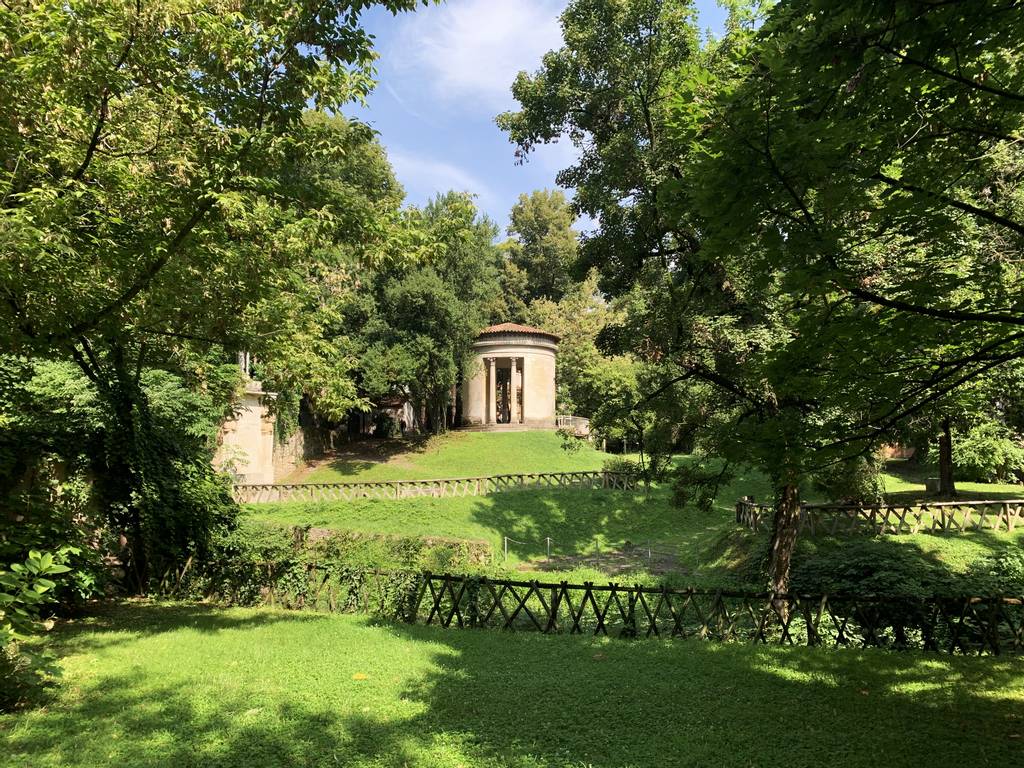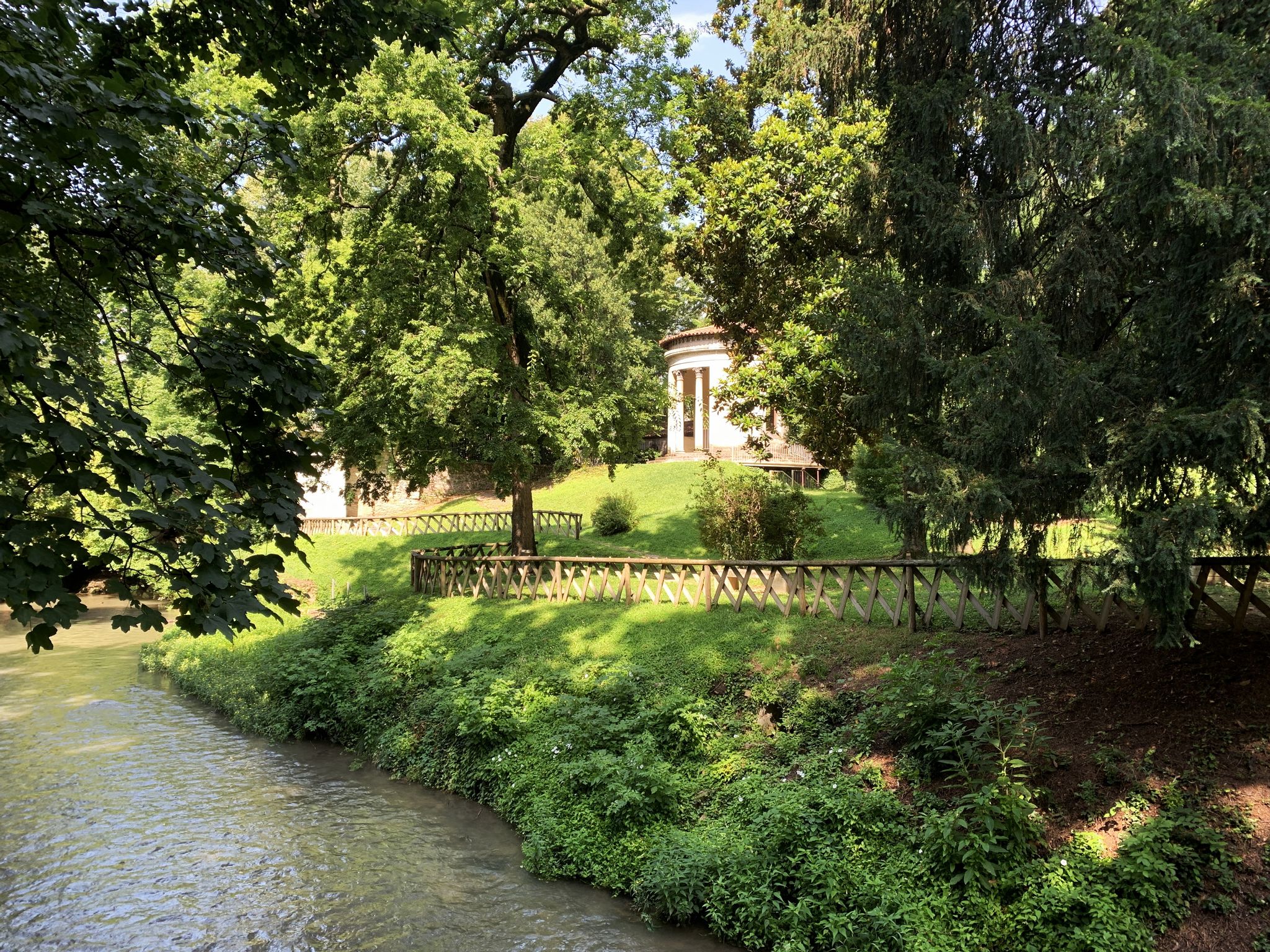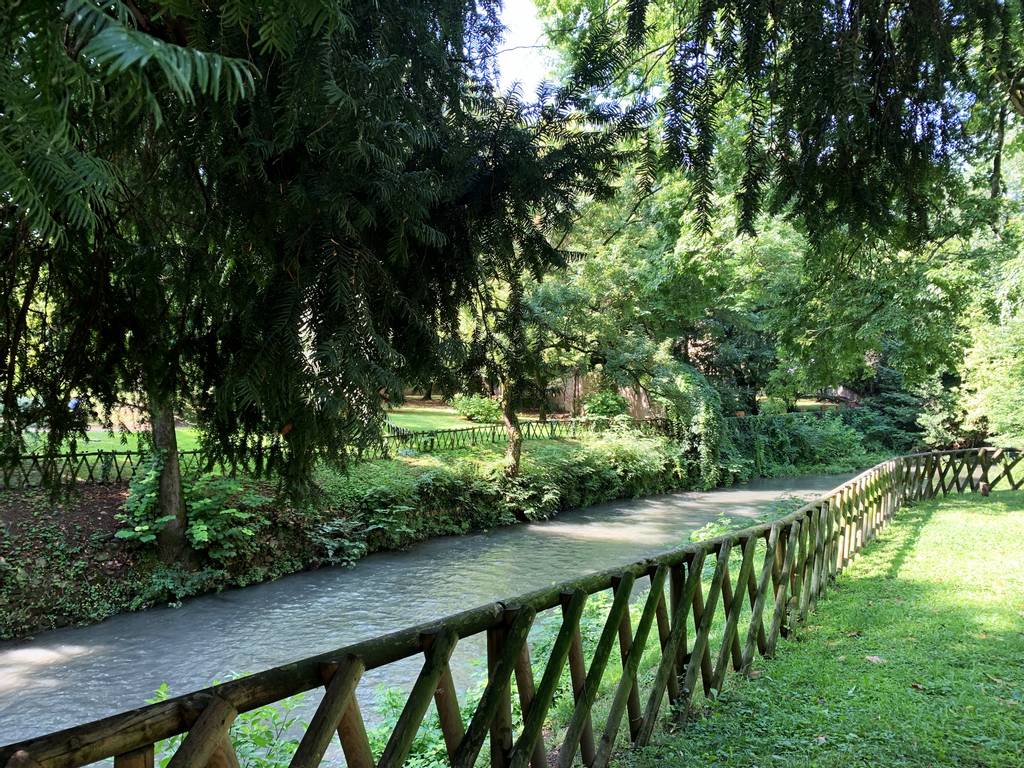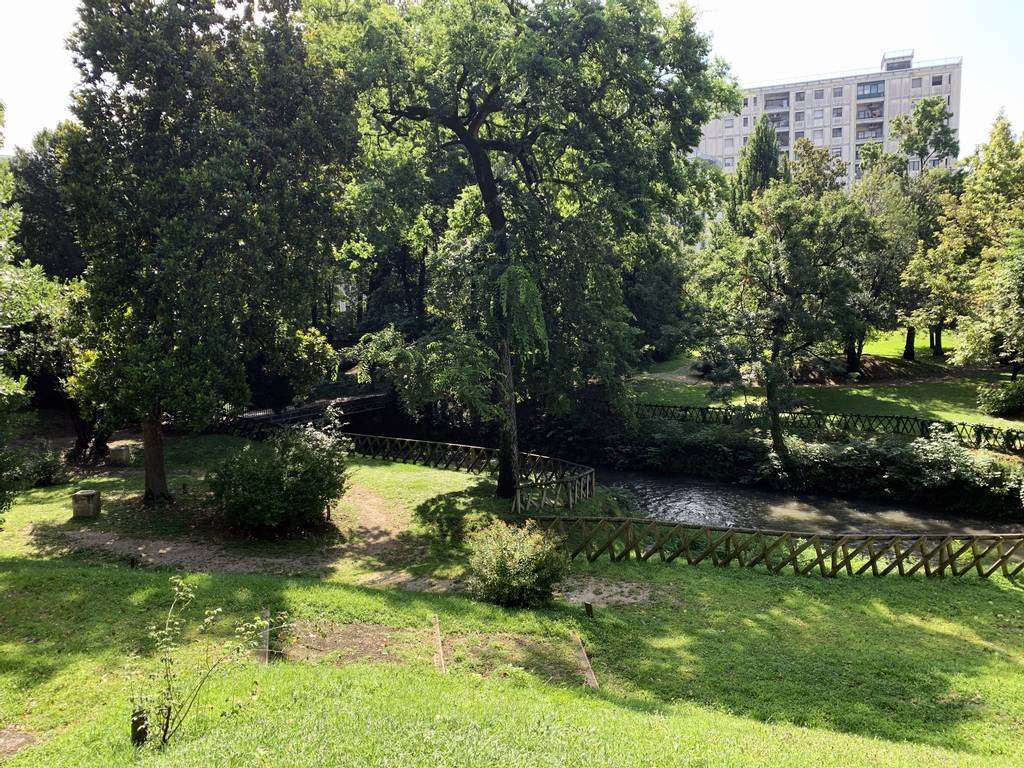Treves De' Bonfili Garden
The Giardino Treves de' Bonfili is one of Padua’s most renowned historical gardens, a hidden jewel of architectural and landscape creation by Giuseppe Jappelli.

The Treves Garden was built between 1829 and 1835 by a family of wealthy Jewish merchants and bankers from Venice, Treves De' Bonfili. The project was entrusted to the famous Venetian architect Giuseppe Jappeli, who designed the Café Pedrocchi.
The Garden is located in the heart of Padua, a few steps from Porta Pontecorvo, one of the ancient Roman gates of Padua, hidden beyond the buildings overlooking the city’s narrow streets. It has a fascinating history behind it. The park was intended as a private botanical garden inspired by the model of the English gardens popular at the time. After the Second World War, most of the original structure of the Jappellian project was lost due to demolition caused by war events and the expansion of the nearby civil hospital. The park was, at that time, almost abandoned, but in 1954 it was taken over by the Municipality of Padua and opened to the public.
In 2002 the restoration of the garden was finished with the help of valuable nineteenth-century botanical manuals. The added trees were historically common in the nineteenth-century Paduan gardens. Were created areas of historical and botanical interest as the collection of ancient and modern roses, hydrangeas, rhododendrons, azaleas, peonies, and daffodils, highlighting the cultural heritage of the original artefacts restored at their former glory.
Treves Garden is a perfect example of an English garden with its rich and varied vegetation, crossed by a watercourse embellished with bridges, and a recreation of a classical temple on the garden's highest point. The waterway that crosses the park is the Alicorno, one of the artificial canals that flow through the centre of Padua, connecting the Astronomy Tower to Prato della Valle where it reciprocates the waters surrounding the Memmia Island and to the Botanical Garden before arriving in the Treves Garden. Here, an iron bridge that connects the two banks of the garden has been rebuilt according to the original design.
A peculiar building is located under the small Greek-inspired temple, an ice house. A tunnel connected the cellars of the no longer existing Treves palace to the park. Some of the architectural elements concealed, behind an apparent decorative aspect, sophisticated machines required to maintain the various exotic plants, which otherwise could not have survived in the garden’s climate. The surviving stone with two caryatids was one of those, hiding behind a water pump used to irrigate the garden. Other elements were lost, such as the impressive greenhouse or the Alchemist's Cave, with imitations of fossils and animal skeletons.
Originally the garden was one of the very few recognised in Italy for the large variety and rarity of the botanical species, thus being a corner of Eden in the city’s heart, creating a sense of synergy with the oldest public Botanical Garden of Padua. Despite its smaller size compared to the initial project, now developing on over 9600 m², and the loss of many original elements, it remains a fascinating park to visit for tourists and an elegant haven of tranquillity for Paduan citizens, where you can enjoy the summer silence and listen to the bells from the Basilica of St. Anthony.
We welcome all contributions, no matter how small. Even a spelling correction is greatly appreciated.
All submissions are reviewed before being published.
Continue to changelog-

© 'Giardino Treves' by Padova.com is licensed under CC BY 4.0 Attribution copied to clipboard Failed copying attribution to clipboard -

© 'Giardino Treves' by Padova.com is licensed under CC BY 4.0 Attribution copied to clipboard Failed copying attribution to clipboard -

© 'Giardino Treves' by Padova.com is licensed under CC BY 4.0 Attribution copied to clipboard Failed copying attribution to clipboard -

We welcome all contributions.
All submissions are reviewed before being published.
We welcome all contributions, no matter how small. Even a spelling correction is greatly appreciated.
All submissions are reviewed before being published.
Continue to changelogWe welcome all contributions, no matter how small. Even a spelling correction is greatly appreciated.
All submissions are reviewed before being published.
Continue to changelogWe welcome all contributions, no matter how small. Even a spelling correction is greatly appreciated.
All submissions are reviewed before being published.
Continue to changelogCategory
Cost
-
Once the humble dwelling of Saint Anthony, the Friary developed over the centuries into the five splendid cloisters located on the southern side of the Basilica.
-
One of the most famous and visited sanctuaries in the world and a testament of art decorated by Giotto, Giusto de' Menabuoi, Altichiero da Zevio, and Jacopo Avanzi
-
408 m
An aristocratic family mausoleum decorated by Altichiero da Zevio with frescoes depicting scenes from the Life of Christ and of Saint George
-
414 m
Piazza del Santo is a miniature citadel sheltered by the splendid masterpieces of the Oratory of Saint George and the Gattamelata statue.
-
The oldest Heritage Garden in the world, home to over 6,000 different plant specimens and the futuristic Garden of Biodiversity




